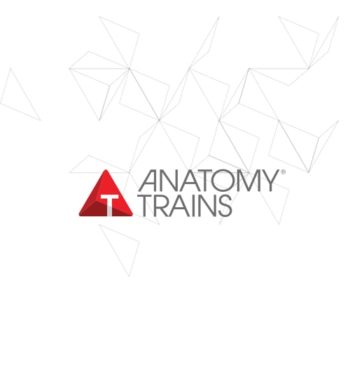Thank you for your interest! Registration for this course closed at 8 PM Eastern Time, July 16th.
Fascia in Sensori-Emotional Response: Effective Implementation of Insights from New Research – live online with Tom Myers and Dr Robert Schleip
Live online course for Hands-on and Movement Practitioners
Daily schedule: 7:00 – 9:00 AM and 12:00 – 2:00 PM Eastern Time (USA) – to find your local time zone, click here for a Time Zone Converter
Note: this live webinar will be recorded for those who cannot make all lecture times. Registrants will have access to the recordings for 45 days after the course ends.
Workshop for Hands-on and Movement Practitioners
Recent research illuminates more of fascia’s role in
- regulating tissue stiffness independently from neuromuscular coordination
- sensory integration of proprio-, intero-, and nociception – fascia is our richest sensory organ
- autonomic nervous system up- and down-regulation, as well as emotional aspects
Dr. Robert Schleip and Tom Myers will review some of the most important insights from the field of fascia research and demonstrate practical translations into hands-on myofascial applications.
Lectures will include:
- Fascia as sensory organ: the basis for proprioception, the so called sixth sense
- The four mechanoreceptor types in fasciae: Golgi-, Pacini-, Ruffini- and free nerve endings. Each with preferred location, mechanical sensitivity and expected physiological response
- Fascia and interoception. Role of visceral and cutaneous receptors for body image formation and emotional conditioning
- Connection between fascial tonicity and the autonomic nervous system
- The tensegrity concept revisited: myofascial force transmission lines, with latest
modifications. Relevance for postural regulation. - Lumbar fasciae: architecture and innervation. New aspects in back pain research.
Practical Applications:
- Golgi receptor stimulation: application for correction of shoulder protraction
- Pacini stimulation: application to spinal facet joints and costovertebral junctions
- Ruffini stimulation: application on upper trapezius, with downstream effects on vagal tonicity and heart rate variability
- Stimulation of free nerve endings: example of periosteum manipulation.
- Fascial techniques for the treatment of acute low back pain
- ‘Mother Cat‘ technique for nuchal fascia
- Inclusion of mindful micro movements of the patient during the hands‐on work
Upon completion of this course, you will receive the following
Bonus material:
2 Hour Video: The Science of Bodywork: The Physiology of Emotional Release with Tom Myers: Provides 2 CEUs through NCBTMB.
3 videos (1 hour each) from Robert Schleip
- Elastic storage properties of the fascial net
- Self myofascial release, beyond foam rolling – A useful model for online coaching
- Connective tissues in sports medicine
You will also receive access to the following videos from the last CONNECT Congress in Ulm, 2017 with the following presenters:
- Michael Kjaer
- Paul Hodges
- Boris Hinz
ROBERT SCHLEIP PHD MA
Robert Schleip PhD MA directs the Fascia Research Project of Ulm University in Germany. Having been a Rolfing instructor and Feldenkrais practitioner for over 20 years, he felt frustrated with the speculative nature of scientific explanations backing up most areas of current bodywork. When he entered the field of connective tissue science as an active laboratory researcher in 2003, he became so thrilled that he soon became one of the driving international forces in the newly emerging field of fascia research. His own research findings on active contractile properties of human fasciae have been honored with the Vladimir Janda Award of Musculoskeletal Medicine. He is research director of the European Rolfing Association, and co‐initiator of the 1st Fascia Research Congress hosted at Harvard Medical School (Boston 2007) as well as of the subsequent congresses.
TOM MYERS BCSI
Thomas Myers is the author of Anatomy Trains (Elsevier 2020) and numerous articles and video programs for manual therapists and movement professionals. Tom speaks frequently on fascia in therapy and training. Tom studied with Drs Ida Rolf, Moshe Feldenkrais, and Buckminster Fuller, and developed his myofascial meridians system from a combining many years of diverse practice with anatomical exploration. The Anatomy Trains map, which connects the muscles into stabilising and coordinating units through the fascial bio-fabric, has been widely employed in therapy, performance enhancement, and rehabilitation. Anatomy Trains is pleased to be the Platinum Sponsor of the 2021 Fascial Research Congress


